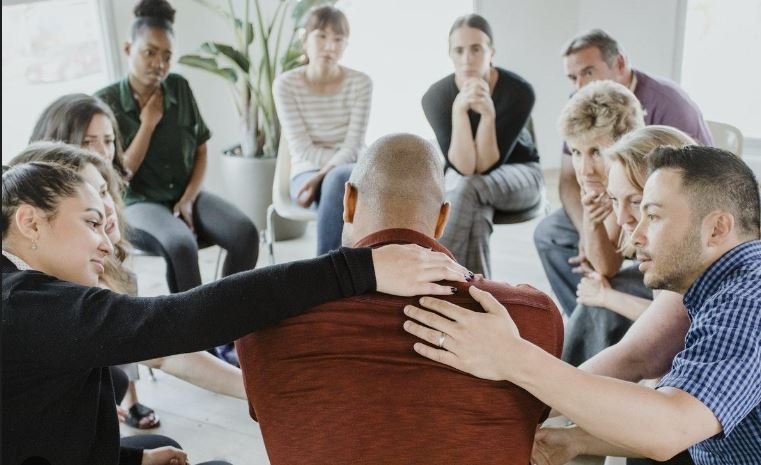Haptonomie techniques for improving sleep focus on using touch and emotional awareness to enhance relaxation and sleep quality. If you’re struggling with sleepless nights or restless sleep, exploring Haptonomie might offer a gentle and effective solution. In this article, we’ll outline some top Haptonomie techniques for improving sleep, detailing how they work and how you can incorporate them into your nightly routine.
Understanding Haptonomie and Sleep
Haptonomie involves using touch and presence to create emotional connections and promote well-being. When applied to sleep, these techniques aim to calm the mind and body, making it easier to fall asleep and stay asleep. By integrating Haptonomie into your bedtime routine, you can address underlying stress and tension that may be affecting your sleep quality.
Haptonomie Techniques for Improving Sleep
1. Gentle Touch and Relaxation
One of the most effective Haptonomie techniques for improving sleep is gentle touch. This involves using light, soothing strokes on the skin to promote relaxation. You can practice this technique by gently massaging your arms, legs, or neck before bedtime. The calming effect of touch can help reduce stress and prepare your body for restful sleep.

2. Guided Body Awareness
Guided body awareness is another powerful technique in Haptonomie. This practice involves focusing on different parts of your body and becoming aware of physical sensations. To use this technique, lie down in a comfortable position and systematically focus on each area of your body, noting any tension or discomfort. By acknowledging these sensations, you can release physical and mental tension that might be interfering with your sleep.
3. Breath Awareness and Regulation
Breath awareness is a key component of Haptonomie that can significantly impact your sleep. By paying attention to your breathing and practising deep, controlled breaths, you can activate your body’s relaxation response. Try incorporating deep breathing exercises into your bedtime routine. Inhale slowly and deeply through your nose, hold your breath for a few seconds, and then exhale slowly through your mouth.
4. Creating a Relaxing Bedtime Ritual
A consistent bedtime ritual incorporating Haptonomie techniques can signal to your body that it’s time to wind down. Establish a calming routine that includes gentle touch, breath awareness, and body relaxation exercises. Performing these rituals regularly can help train your body and mind to associate these activities with sleep.
5. Partnered Touch and Connection
If you have a partner, incorporating partnered touch into your bedtime routine can enhance both relaxation and connection. Gently holding hands, cuddling, or giving each other a light massage can create a sense of emotional security and calm. This mutual touch can be soothing and help both partners transition into sleep more easily.
6. Mindfulness and Body Scan
Mindfulness involves being present in the moment without judgment. A body scan is a mindfulness technique where you mentally scan your body from head to toe, observing any areas of tension or discomfort. This practice can help you become more aware of your body’s needs and promote relaxation before sleep.
7. Visualization Techniques
Visualization techniques can also support better sleep through Haptonomie. Imagine yourself in a peaceful and relaxing environment, such as a quiet beach or a serene forest. Visualizing this calming scene can help shift your focus away from stress and anxiety, creating a more conducive environment for sleep.
8. Establishing a Sleep-Inducing Environment
Creating a sleep-friendly environment is essential when practising Haptonomie to improve sleep. Ensure your bedroom is dark, quiet, and cool. Consider using calming scents, such as lavender essential oil, to further enhance relaxation. A comfortable and serene setting will support the effectiveness of Haptonomie techniques.
9. Progressive Muscle Relaxation
Progressive muscle relaxation involves tensing and then slowly relaxing different muscle groups. This technique can help release physical tension and promote a deeper sense of relaxation. Start with your feet and work your way up through your body, focusing on each muscle group for a few seconds before relaxing.
10. Journaling and Emotional Release
Journaling can be a helpful tool for processing emotions and reducing mental clutter before sleep. Take a few minutes each night to write about your day, your thoughts, and your feelings. This practice can help clear your mind and create a sense of closure, making it easier to drift off to sleep.
Conclusion
Incorporating Haptonomie techniques for improving sleep can significantly enhance your ability to relax and achieve restful sleep. By integrating gentle touch, breath awareness, and mindfulness into your bedtime routine, you can create a soothing environment that supports better sleep. Experiment with these techniques to find what works best for you and enjoy a more peaceful, restorative night’s sleep.





Your article helped me a lot, is there any more related content? Thanks! https://www.binance.info/en-ZA/register?ref=B4EPR6J0